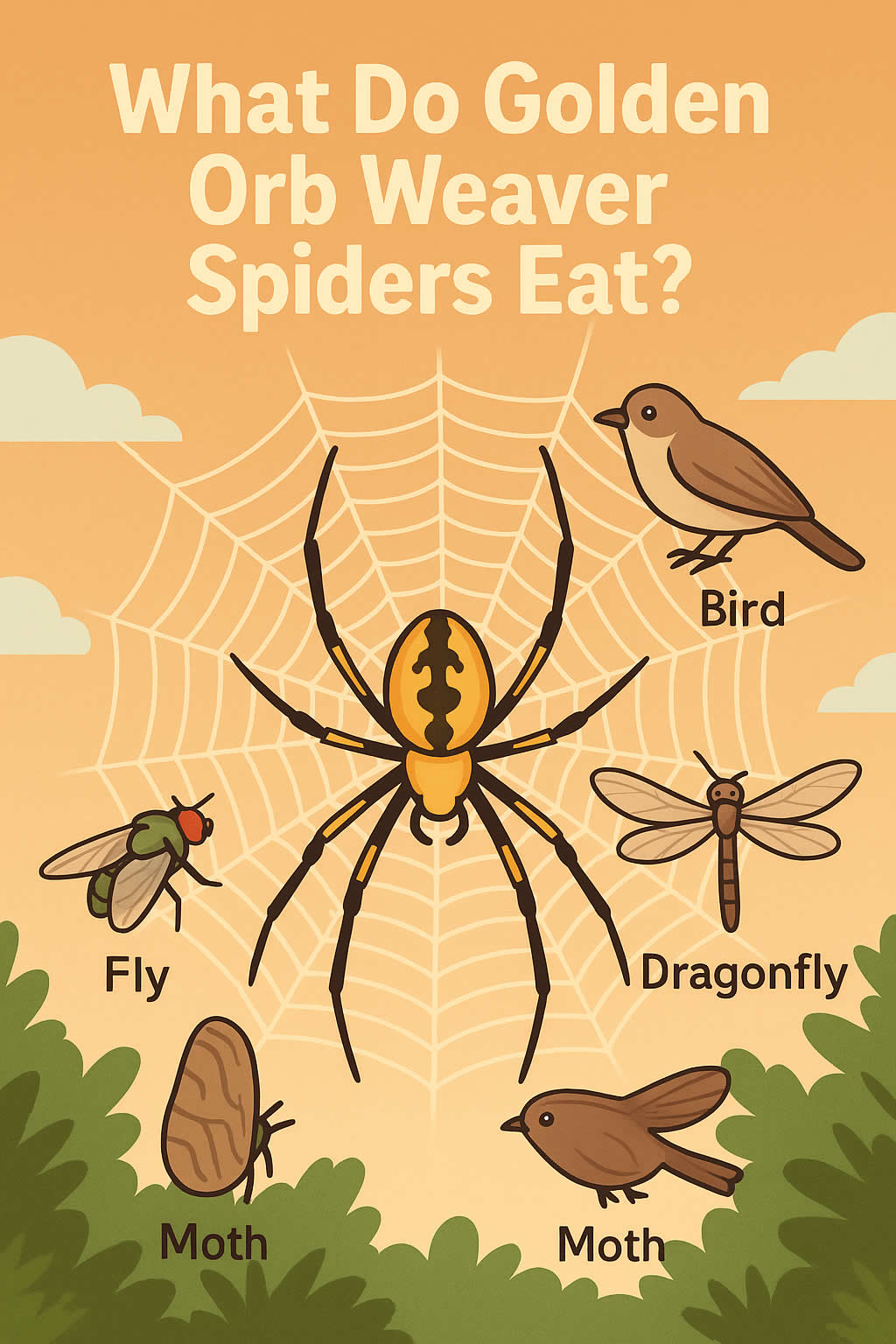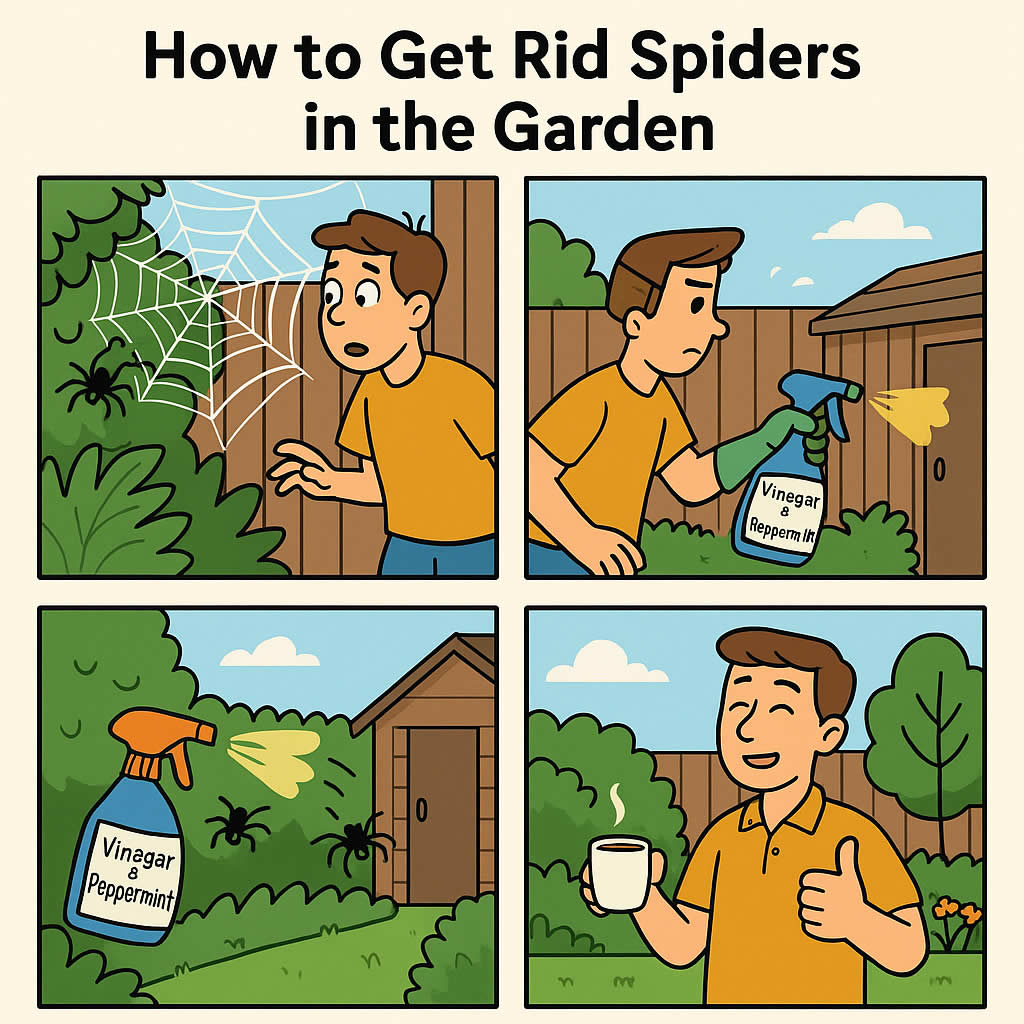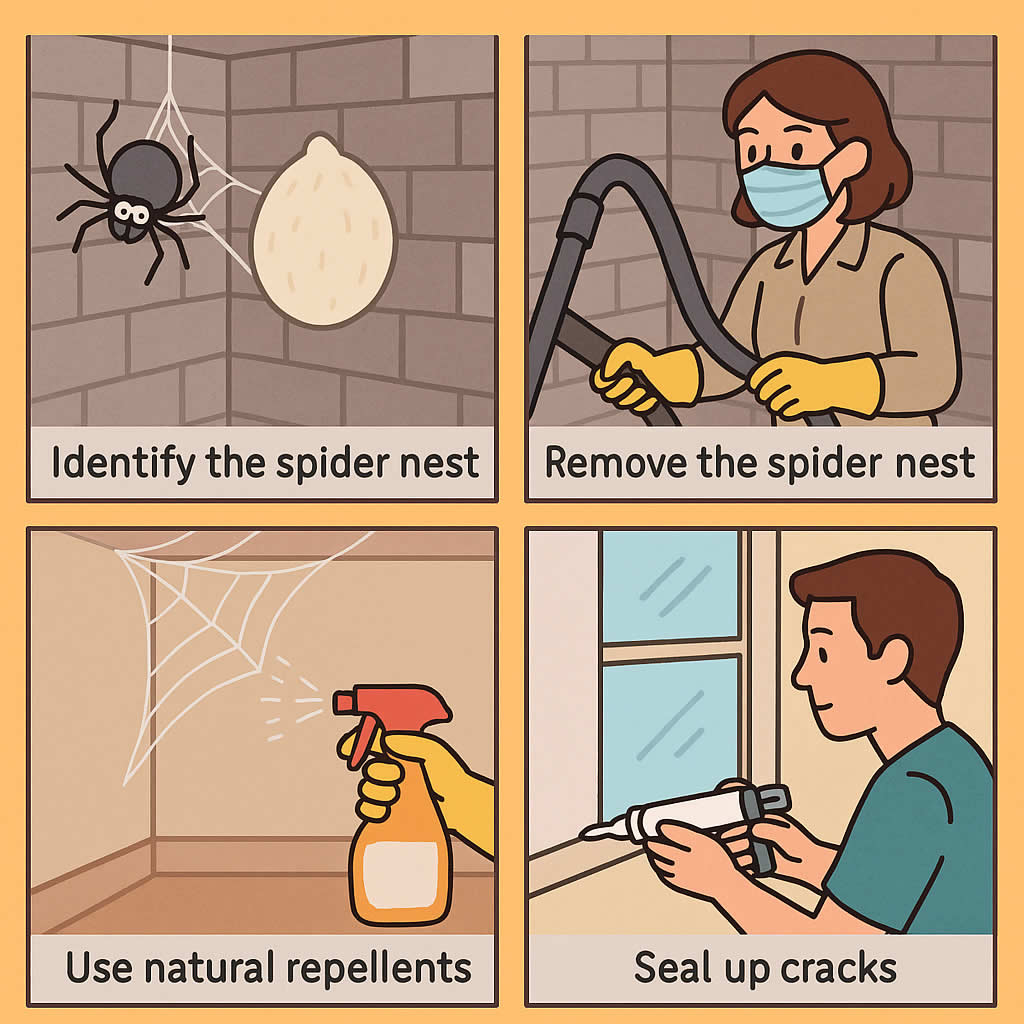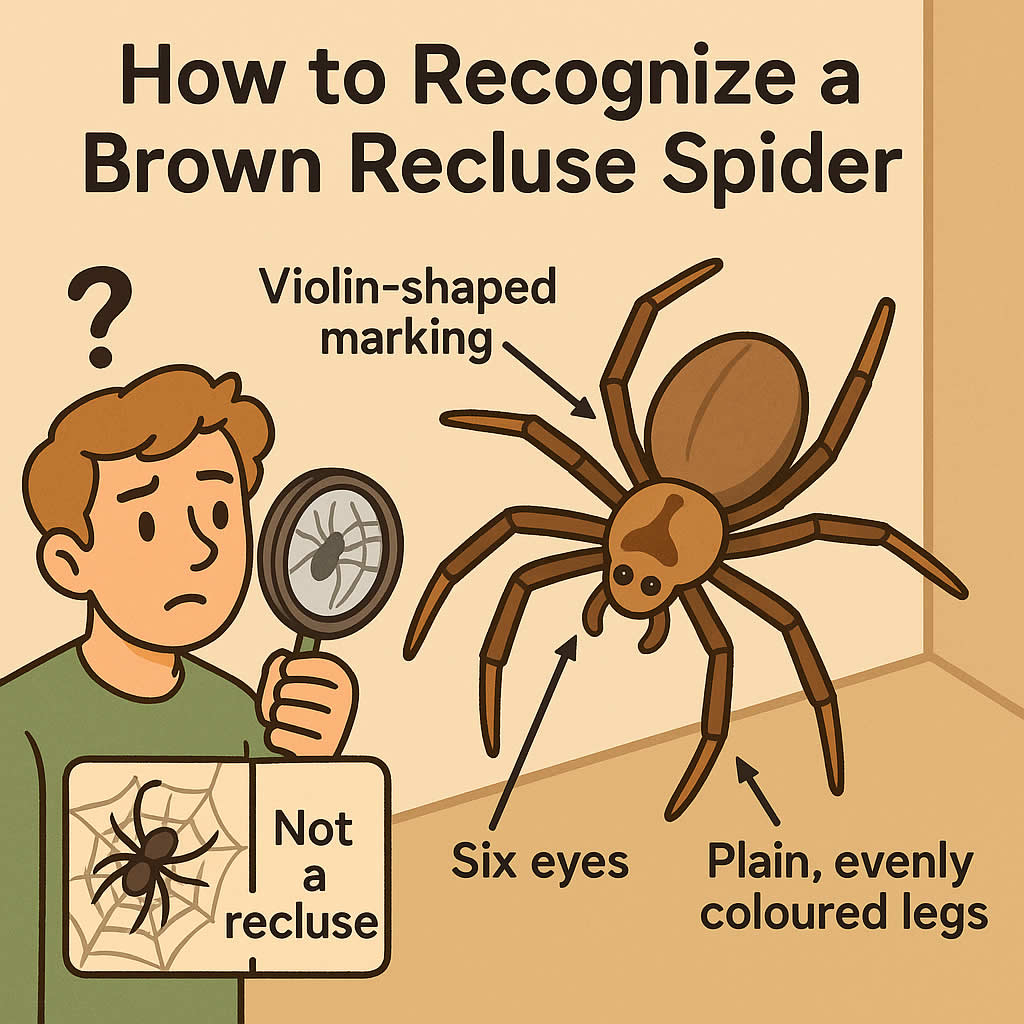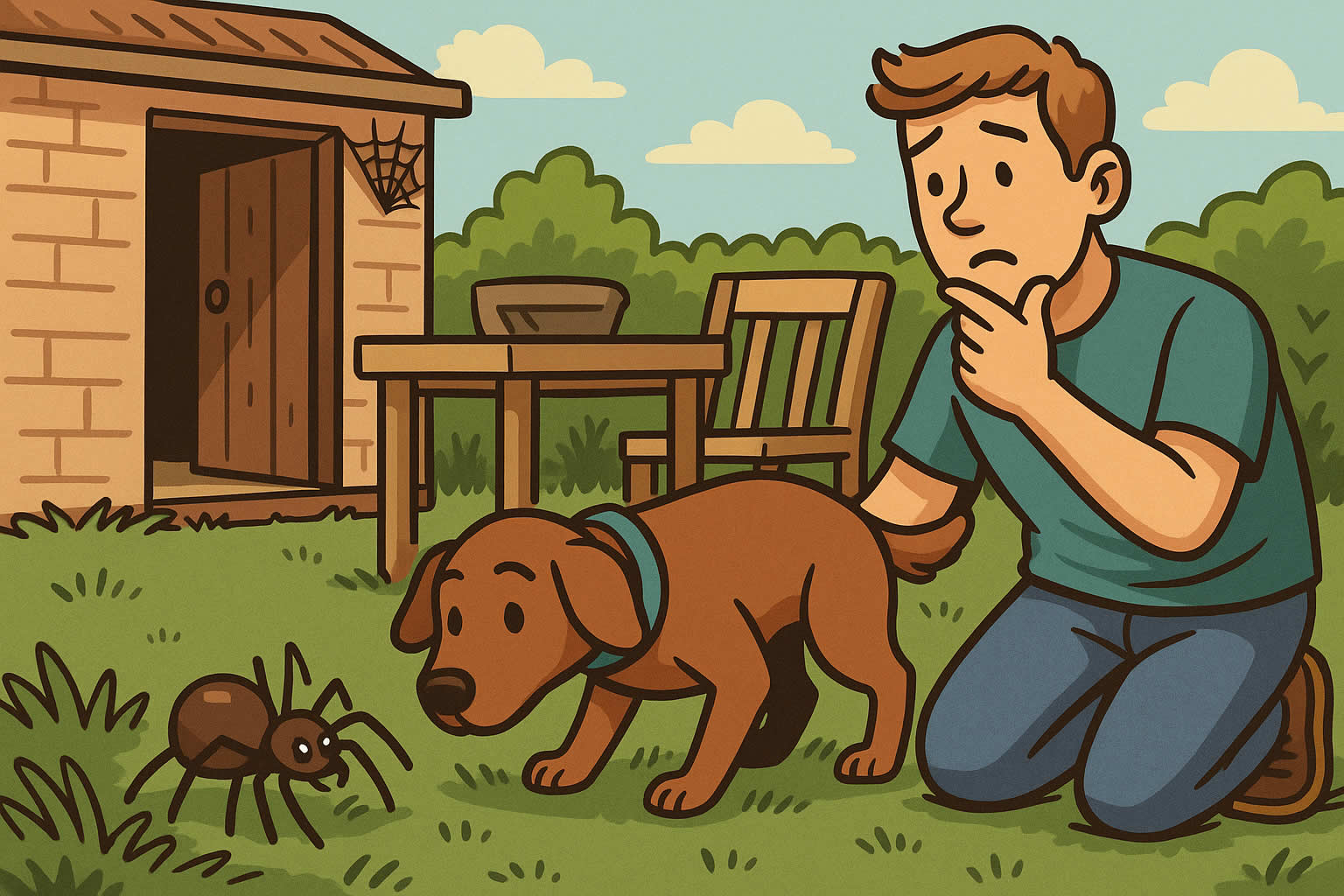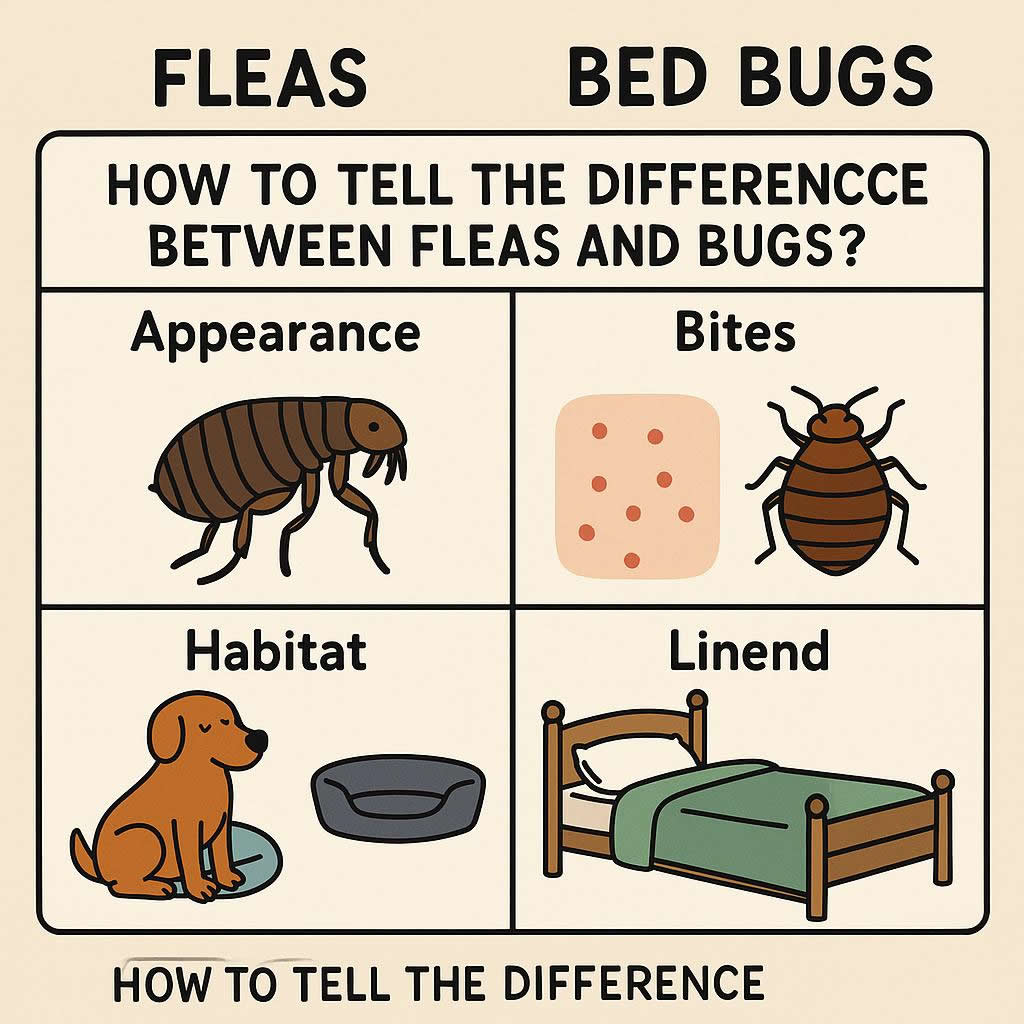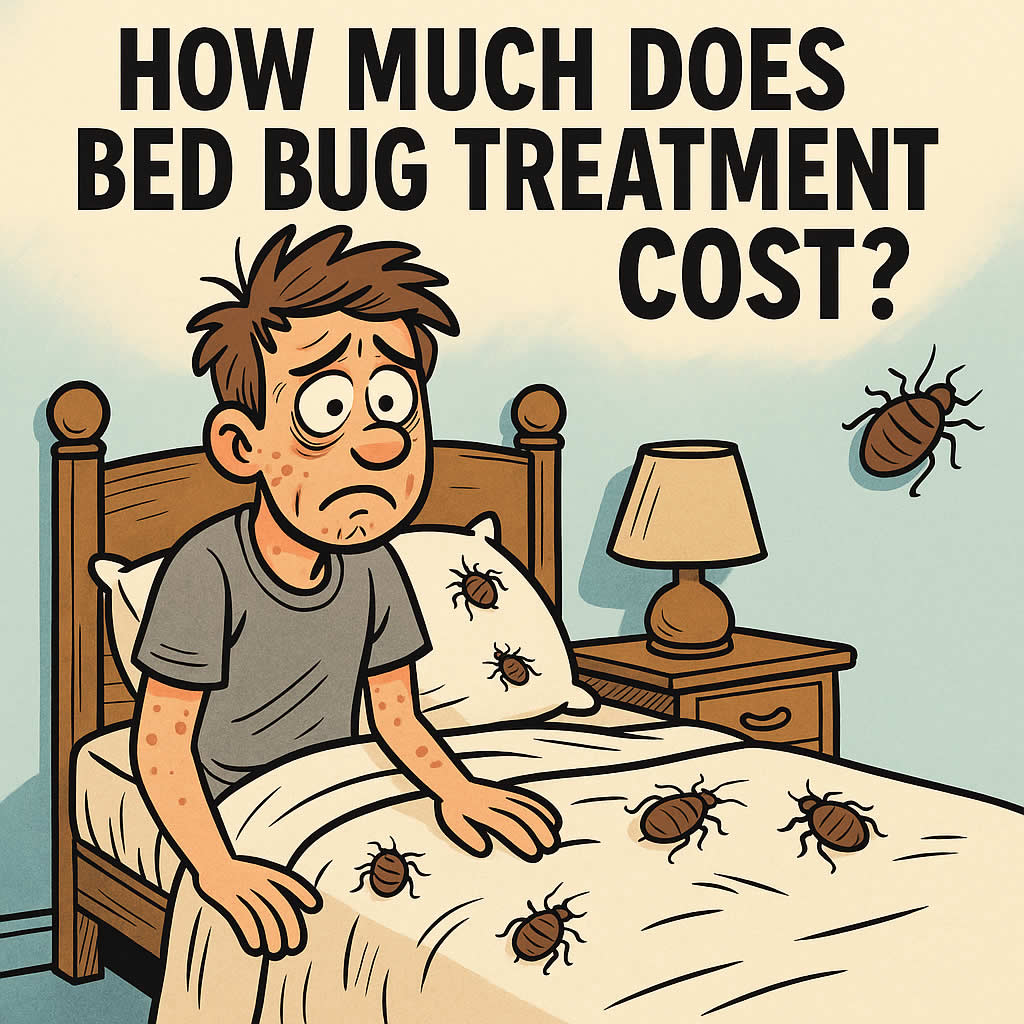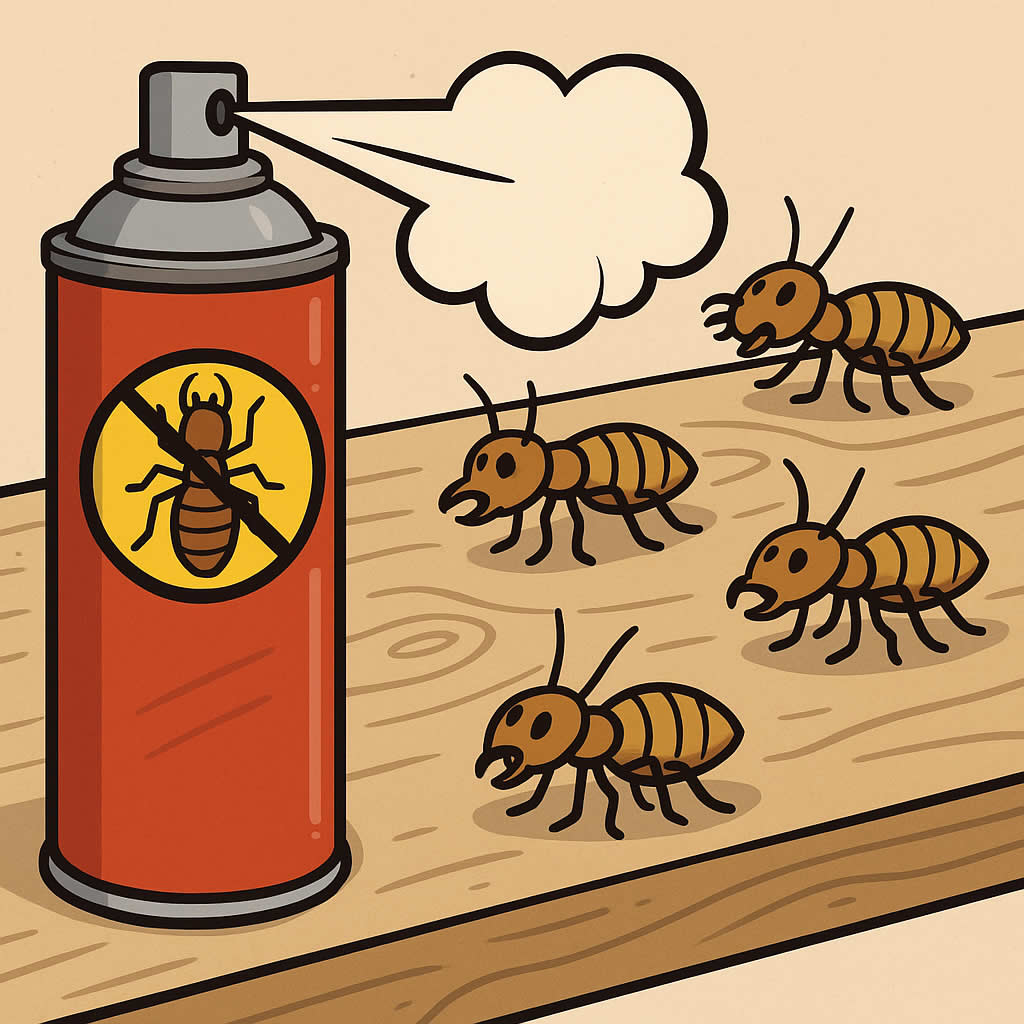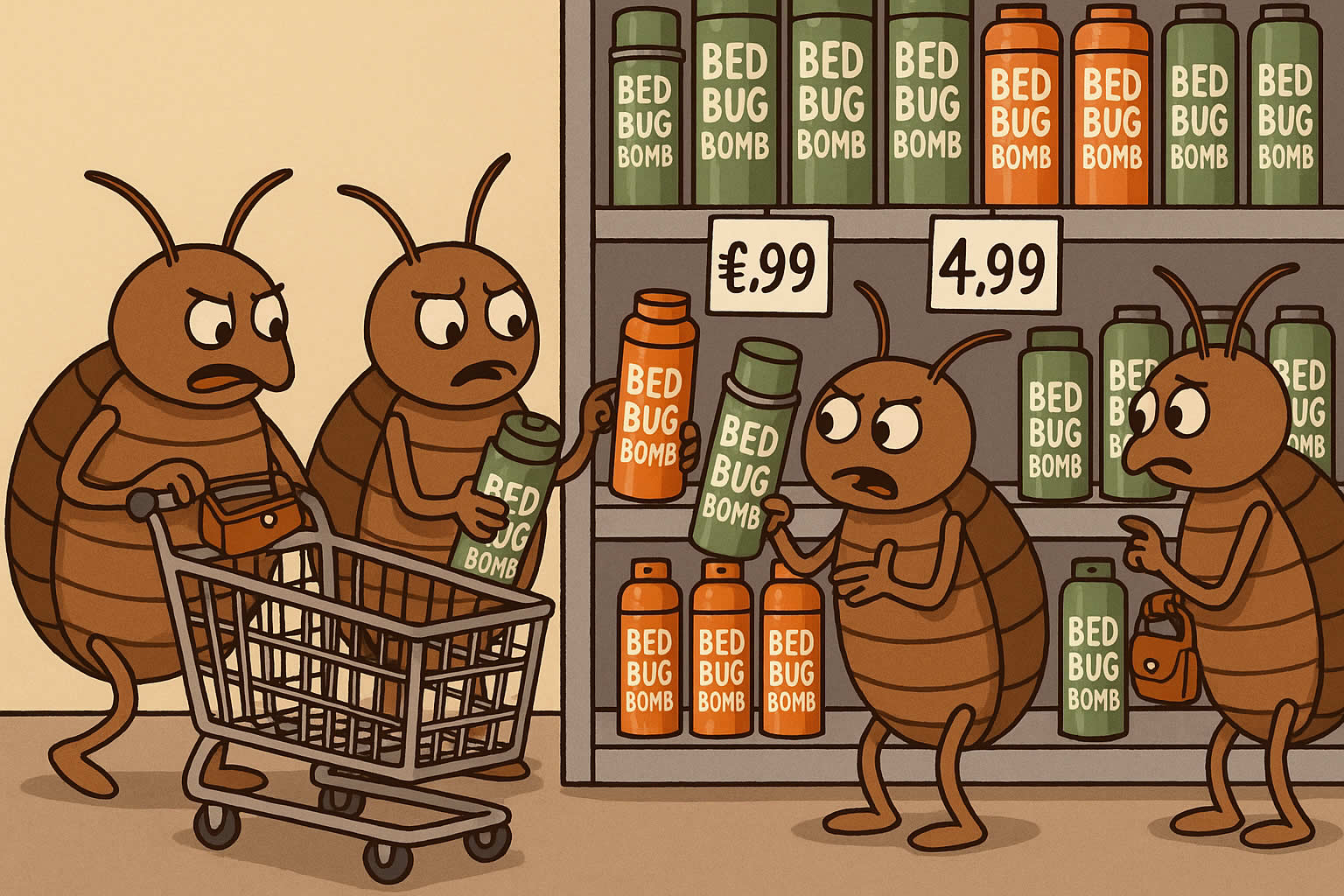Related Queries
ToggleHave you ever walked through a garden or woodland and spotted a massive, glistening web stretched across the path, glowing golden in the sunlight? If so, chances are you’ve encountered the handiwork of a golden orb weaver. These spiders are some of the most impressive web builders in the natural world, and their sheer size and shining silk have earned them plenty of attention.
But beyond their striking appearance, one question comes up again and again: what exactly do golden orb weaver spiders eat? You might have heard rumours of them catching birds, or stories of them tackling creatures far bigger than themselves. The truth is fascinating, and it tells you a lot about how these spiders survive and thrive across the world.
In this guide, we’ll break down what golden orb weavers really eat, how they catch their food, and how their diet shifts depending on where they live. You’ll discover the role their unique webs play in their feeding, the surprising range of prey they’re capable of handling, and the myths that exaggerate their appetite. By the end, you’ll not only understand their eating habits but also see why these spiders are vital for keeping insect numbers under control.
What is a Golden Orb Weaver Spider?
Golden orb weavers belong to the genus Nephila, a group of large spiders known for spinning some of the biggest and strongest webs in the natural world. Their silk has a golden tint that shines in sunlight, giving them their name. These spiders are often easy to recognise because of their impressive size: females can grow up to 5 cm in body length, with leg spans reaching 12 cm or more. Males, by contrast, are tiny — often less than a tenth of the female’s size — and live quietly on the edge of her web.
They are not aggressive spiders, despite their intimidating look. Instead, they rely on their webs to do most of the work for them. Once something flies into their golden trap, the spider can move in quickly to secure the meal.
How to recognise them
If you’ve never seen one up close, golden orb weavers are easy to pick out once you know what to look for:
- Colouration: Females often have long legs banded in yellow and black, with a dark, elongated body.
- Webs: Their golden webs can stretch several metres wide, often strung between trees or tall plants.
- Size difference: Females are among the largest web-spinning spiders, while males are tiny in comparison.
Their webs are strong enough to occasionally catch small vertebrates, which is part of the reason myths about their diet have spread. But most of the time, they’re feeding on insects — just in much larger numbers than your average garden spider.
Where they are found globally
Golden orb weavers are widespread in warm and tropical regions around the world. You’ll find them in:
- Australia and Southeast Asia: Particularly famous for their giant webs across walking trails and gardens.
- Africa: Several species thrive in forests and savannas.
- The Americas: From the southern United States down into South America, golden orb weavers are a common sight in warm climates.
Their preference for open spaces between trees or structures makes their webs hard to miss. People often encounter them in gardens, parks, forests, and sometimes even on buildings when conditions are right.
What Do Golden Orb Weavers Eat in the Wild?
Golden orb weavers are carnivorous predators that rely on their webs to catch food. Unlike hunting spiders such as wolf spiders or jumping spiders, orb weavers wait patiently for prey to come to them. Thanks to the sheer size and strength of their webs, they can capture a wider range of animals than most spiders.
At their core, their diet is insect-based. They eat whatever gets trapped in their golden net, from tiny midges to large flying insects. However, scientific studies and field observations have recorded them taking on prey that’s surprisingly large — sometimes far bigger than you’d expect a spider to manage.
Typical diet
For the majority of their meals, golden orb weavers eat flying insects that blunder into their webs. These can include:
- Flies and midges — abundant and easy to trap.
- Beetles — especially species with hard wing cases, which the orb weaver’s venom can still subdue.
- Moths and butterflies — their broad wings often get tangled in the sticky silk.
- Grasshoppers and crickets — large insects that provide a good meal when caught.
- Dragonflies — strong flyers that can still become ensnared in the strong web.
This insect-heavy diet makes golden orb weavers important for controlling pest populations in the areas they live. They can consume hundreds of insects over their lifetime, removing everything from crop pests to garden nuisances.
Scientific studies & unusual prey
While most meals are insects, golden orb weavers have been documented catching animals that push the limits of what you’d think a spider could eat. Scientific studies and field reports have recorded:
- Small birds: In 2012, researchers in Queensland, Australia, photographed a golden orb weaver feeding on a finch caught in its web. Cases like this are rare but demonstrate the sheer strength of their silk.
- Bats: A 2013 study published in PLoS ONE described orb weavers in Peru and Papua New Guinea catching and feeding on small bats. The bats became entangled in large vertical webs and couldn’t escape.
- Lizards: In parts of Australia, golden orb weavers have occasionally been observed preying on small skinks that stumbled into their webs.
- Snakes: There are isolated reports of juvenile snakes being ensnared and eaten, though these are extremely rare events.
These unusual meals are not a regular part of their diet. They’re opportunistic — meaning the spider will eat whatever happens to get caught. Most days, that’s insects. But when larger prey blunders in, the orb weaver won’t pass up the chance.
This ability to take down prey of many sizes is one of the reasons golden orb weavers are so successful as a species. It also explains why they’ve captured human imagination — a spider that can eat a bird or bat sounds extraordinary, even though it’s not their everyday meal.
How Do Golden Orb Weavers Catch Their Food?
Golden orb weavers rely almost entirely on their webs to feed. Unlike hunting spiders, they don’t chase prey. Instead, they let their enormous, golden webs do the hard work. These webs can stretch several metres across and are strong enough to stop insects far larger than what most spiders can handle.
To understand how they eat, it helps to look at the process step by step.
Step-by-step: how golden orb weavers hunt and feed
- Web construction – The spider builds a huge, intricate web between trees, shrubs, or man-made structures. The silk is golden in colour and incredibly strong, making it visible in sunlight but difficult for insects to avoid.
- Waiting for vibrations – The spider typically sits at the centre of the web or just off to the side, waiting for vibrations. The strands act like an alarm system — every twitch signals a possible meal.
- Capturing the prey – When an insect hits the web, it quickly becomes tangled in the sticky silk. The web absorbs the impact and prevents the prey from breaking free, even if it’s large and powerful like a dragonfly.
- Approaching carefully – The spider senses the strength of the vibrations and approaches with caution. If the prey is struggling too much, the spider may wait for it to tire before moving in.
- Delivering the bite – Once close, the orb weaver uses its fangs to inject venom. This venom immobilises the prey and begins breaking down its tissues for easier digestion.
- Wrapping the prey – With quick, precise movements, the spider wraps the victim in layers of silk. This prevents escape and allows the spider to save the meal for later if it isn’t hungry right away.
- Feeding – The spider pierces the prey again and begins sucking out the liquefied insides. Like most spiders, golden orb weavers can’t chew solid food — they digest it externally and then drink the results.
- Cleaning up – Once feeding is finished, the spider often discards the empty exoskeleton, clearing space in the web for new prey.
Why their webs are so effective
The web itself is the true secret behind the orb weaver’s success. Studies have shown that golden orb silk is not only incredibly strong but also flexible, able to absorb the impact of large, fast-flying insects. The golden hue may even act as a lure, reflecting light in a way that attracts bees and other insects.
This combination of strength, stickiness, and size means the orb weaver’s web works like a finely tuned trap, capable of handling both everyday insects and the occasional surprising catch.
Do Golden Orb Weavers Eat Different Things in Different Regions?
Golden orb weavers live in many parts of the world, from Australia and Asia to Africa and the Americas. While their hunting method stays the same everywhere, their diet can shift depending on what local prey is available. These spiders are opportunistic feeders — they don’t go looking for specific meals, but instead eat whatever blunders into their webs.
Orb weavers in Australia
Australia is home to some of the largest and most striking golden orb weavers. Their massive webs can stretch across garden paths, forest clearings, or even between telegraph poles. In these environments, their diet includes a wide range of flying insects, from beetles and cicadas to grasshoppers and moths.
Australian golden orb weavers have also been recorded catching small vertebrates. Researchers have documented cases where birds such as finches and reptiles like skinks became trapped. These events are rare but highlight just how powerful their webs can be.
Orb weavers in Asia
Across Asia, especially in tropical regions like Indonesia and Malaysia, golden orb weavers thrive in rainforests and rural gardens. Their webs are often built high between trees, where they intercept moths, wasps, and butterflies.
Studies in Southeast Asia have shown they play an important role in controlling pest species, including insects that damage crops like rice and fruit. While unusual catches happen occasionally, their diet here is mostly dominated by the abundant insect life in forests and farmlands.
Orb weavers in the Americas
In the Americas, species like Trichonephila clavipes (the golden silk orb weaver) are widespread, especially in the southern United States, Central America, and South America. Their diet mainly consists of flies, mosquitoes, and larger insects like dragonflies.
One of the most famous studies of orb weavers in South America reported cases of them ensnaring small bats. These rare incidents usually happened when bats flew into large webs strung across clearings. While unusual, it shows that in regions with plenty of diverse wildlife, orb weavers occasionally capture prey far outside the “normal” spider menu.
How Do Golden Orb Weavers Compare to Other Spiders’ Diets?
Golden orb weavers are famous for their huge webs and their ability to catch a wide range of prey, but how does their diet stack up against other spiders you might know? Looking at house spiders, wolf spiders, and tarantulas gives you a sense of just how unique orb weavers really are.
House spiders vs orb weavers
House spiders, the ones you often find in corners or scuttling across the floor in autumn, live on a diet of small insects. They typically eat flies, ants, or moths that wander too close to their tangled webs. Compared to orb weavers, their prey is much smaller and less varied. House spiders rarely take on anything beyond insects, and their webs don’t have the strength to handle larger animals. Orb weavers, by contrast, can occasionally capture prey many times their size.
Wolf spiders vs orb weavers
Wolf spiders don’t spin webs to catch food at all. Instead, they hunt actively, chasing down prey on the ground. Their diet usually includes beetles, crickets, and other small invertebrates they can overpower with speed and strength. While wolf spiders are skilled hunters, their meals are limited to what they can physically capture. Golden orb weavers, on the other hand, use their enormous webs to do the chasing for them, giving them access to flying insects that wolf spiders could never reach.
Tarantulas vs orb weavers
Tarantulas are much larger, ground-dwelling spiders that rely on ambush hunting. They can eat insects, small rodents, frogs, and even reptiles if the opportunity arises. While their diet may sound similar to some of the rare cases with orb weavers, the difference lies in approach. Tarantulas actively overpower and subdue their prey, whereas orb weavers rely on chance and the strength of their webs. Tarantulas also feed on fewer but larger meals, while orb weavers consistently catch and consume a steady flow of insects.
This comparison highlights just how versatile orb weavers are. While they don’t actively hunt like wolf spiders or tarantulas, the sheer reach and power of their webs allow them to capture a wider range of prey than most spiders could ever manage.
Real-Life Scenarios: What Might They Catch?
It’s one thing to list the types of prey golden orb weavers eat, but it’s another to picture it happening. These spiders build their webs in busy spots where insects travel, and every so often, something surprising blunders into their golden silk. Here are a few everyday scenarios that show what they might catch.
Example of a moth at night
It’s late evening in a tropical garden. A golden orb weaver has built a web across the gap between two trees. A moth, drawn to the light from a nearby house, flutters straight into the web. The silk holds it firmly, and before long, the spider creeps across, delivers a quick bite, and begins wrapping the moth to eat later.
Example of a dragonfly in the garden
On a warm afternoon, a dragonfly zips through the air, skimming above a pond. It doesn’t notice the almost invisible web stretched across the water’s edge. With a sharp snap, the dragonfly gets stuck. The web’s strength prevents it from breaking free, and the orb weaver quickly secures its prize.
Rare example of a small bird
High in the branches of an Australian forest, a finch flies into a wide-spanning web while darting between trees. The bird thrashes, but the golden silk holds fast. The orb weaver cautiously approaches, delivering venom that eventually immobilises the bird. While this sort of catch is rare, it shows the remarkable strength of both the spider and its web.
These scenarios remind you that while most meals are insects, golden orb weavers are capable of far more when opportunity arises.
Myths vs Facts About Golden Orb Weaver Diets
Golden orb weavers are surrounded by stories, and not all of them are true. Because their webs are so large and strong, people often exaggerate what they’re capable of eating. Let’s separate myth from reality.
Myth: They regularly eat birds
Fact: While golden orb weavers have been recorded eating small birds, these events are rare. Scientific studies and field photos confirm it can happen, but it’s not their everyday diet. Insects make up the overwhelming majority of their meals.
Myth: They attack humans
Fact: Golden orb weavers are not aggressive towards people. They don’t hunt humans and they don’t see you as food. Their webs are designed for flying insects, and they only bite in self-defence if handled roughly.
Myth: They eat everything that lands in their web
Fact: Not every creature that hits the web becomes dinner. Sometimes the orb weaver will cut free prey that’s too large or not suitable, such as leaves or even insects with strong defences. Their diet is broad, but it’s not limitless.
Clearing up these myths shows that while orb weavers are impressive, they’re not the unstoppable predators some make them out to be. They’re highly effective insect catchers with the occasional unusual meal — nothing more, nothing less.
Why Are Golden Orb Weavers Important in the Ecosystem?
Golden orb weavers aren’t just fascinating to look at — they play a vital role in the balance of nature. By catching and eating such a wide variety of insects, they help regulate populations that could otherwise become overwhelming.
Natural pest control benefits
Think about how many insects a single web can trap in a day. Flies, mosquitoes, beetles, moths — all the creatures that might otherwise buzz around crops, gardens, or homes are removed by orb weavers simply doing what they do best. In agricultural areas, they’re particularly valuable, keeping down pests that damage plants and spread disease.
Some studies suggest that orb weavers can eat hundreds of thousands of insects in a year. While that number may sound staggering, it shows just how efficient they are as natural pest controllers. By reducing pest populations, they indirectly support healthier ecosystems and even help farmers.
Balancing food chains
Golden orb weavers are also an important part of the food chain themselves. Birds, lizards, and wasps prey on them, keeping spider numbers in check. This balance ensures that orb weavers don’t dominate completely, while still allowing them to play their role as regulators of insect populations.
Without spiders like orb weavers, the balance of insects would shift dramatically. Flies and moths would multiply unchecked, which could cause ripple effects across entire ecosystems. By doing what comes naturally — spinning webs and catching prey — golden orb weavers quietly maintain stability in the environments they live in.
Final Thoughts
Golden orb weaver spiders might look intimidating with their massive webs and large size, but their eating habits are more fascinating than frightening. For the most part, they live on a steady diet of insects — flies, beetles, moths, and dragonflies that wander into their golden traps. Occasionally, when luck and circumstance collide, they’ve been recorded catching prey as surprising as birds or bats. These rare events make headlines, but they’re not the daily reality for these spiders.
What makes golden orb weavers remarkable is not just what they eat, but how they eat. Their webs are some of the strongest and largest in the animal kingdom, allowing them to trap prey others can’t. Their feeding method is efficient, methodical, and perfectly suited to their environment. Whether they’re in the forests of Australia, the gardens of Asia, or the wetlands of the Americas, they adapt their diet to whatever the local ecosystem provides.
Call to action: respect their role in nature
Next time you see one of these golden webs glistening in the sun, take a moment to appreciate it rather than fear it. Golden orb weavers aren’t out to harm you. Instead, they’re working quietly to keep insect numbers down, acting as natural pest controllers that benefit both people and the environment.
So, if you come across one in your garden or on a walk, give it space and let it do its job. By respecting these spiders and their role in nature, you’re also supporting the balance of the ecosystems we all rely on.
Pest Control Herefordshire – Pest Control Lidlington – Pest Control Hinwick
